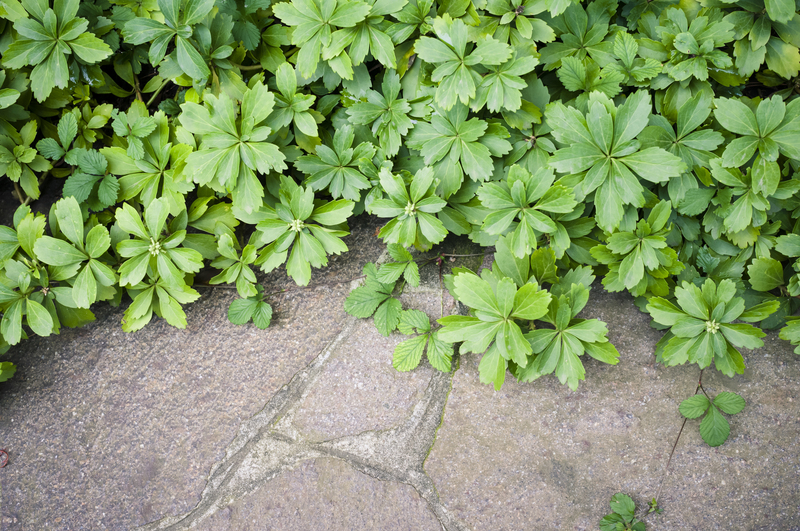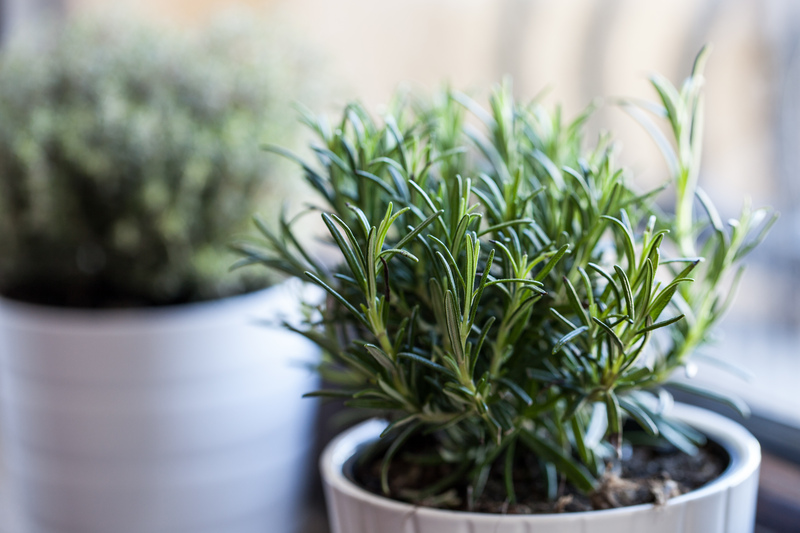Capture Calm with These Inspiring Zen Garden Design Tips
Posted on 28/09/2025
Capture Calm with These Inspiring Zen Garden Design Tips
Zen gardens--also known as Japanese rock gardens or karesansui--are serene outdoor spaces known for their ability to cultivate tranquility and mindfulness. These stunning landscapes combine simplicity, deliberate design, and natural elements to create a perfect environment for meditative reflection. Whether you own a sprawling yard or a modest balcony, embracing the principles of a Zen retreat can help you capture calm at home.
This comprehensive guide will provide you with actionable Zen garden design ideas, expert tips, and inspiration so you can craft a personal oasis that soothes your senses and nourishes your inner peace.
Understanding the Philosophy Behind Zen Garden Design
Before delving into the practicalities, it's helpful to grasp the underlying philosophies that shape Zen-inspired gardens:
- Minimalism: Zen gardens emphasize simplicity and reduction, focusing on a few select elements carefully arranged for maximum impact.
- Natural Harmony: Every component--from rocks to raked gravel--evokes the inherent beauty and tranquility of nature.
- Symbolism: Rocks may symbolize mountains or islands, gravel may represent water, and moss can embody lush forests or time's passage.
- Mindfulness: Interacting with the garden, whether through raking gravel or simply sitting in contemplation, encourages present-moment awareness.
By weaving these principles into your own space, you don't just create a beautiful Zen sanctuary--you build a haven for mindful living.

Planning Your Zen Garden: Key Considerations
1. Assess Your Space
Zen landscapes can flourish in large yards, tiny terraces, or even quiet corners. Start by measuring your available area and visualizing how a minimalist, contemplative feature might fit within it. Remember, Zen tranquility doesn't require size--purposeful design is what matters.
2. Choose Your Focal Point
Every peaceful Zen garden revolves around a central feature. This could be a striking boulder, a small water vessel, a carefully pruned tree, or a sculptural stone lantern. Pick something that naturally draws the gaze and provides a sense of grounding calmness.
3. Consider Your Theme
Traditional Zen gardens evoke dry riverbeds, mountain vistas, or islands in the sea. Which theme inspires you most? Your answer will shape your design choices, from the selection of stones to the patterns you rake in the gravel.
4. Select a Color Palette
Zen gardens are celebrated for their subdued, neutral hues: greys, whites, soft greens, and earthy browns. These calming colors foster a tranquil mood and allow visitors to focus on form and texture rather than bright distraction.
Zen Garden Design Essentials: Elements for Tranquility
For a garden that truly captures calm, integrate these classic Zen garden components:
1. Rocks and Stones
Stones and rocks are fundamental to any Japanese-inspired space. Choose a variety of shapes and sizes, and group them in odd numbers--three or five stones often appear together in classic Zen arrangements. Use flat stones as stepping paths or upright ones as sculptural elements. Each placement should feel intentional, reflecting the rough simplicity of nature.
2. Gravel and Sand
Pale gravel or white sand forms the "sea" within a dry landscape garden. Spread it smoothly, then use a rake to create flowing, wavelike patterns--these represent water currents and evoke a sense of ongoing motion amid stillness. For added variety, experiment with spiral or concentric circle designs around stones.
3. Moss and Groundcovers
Moss is a beloved feature in Japanese gardens. It softens hard lines, provides a plush green texture, and embodies the slow passage of time. If moss isn't feasible in your climate, low-growing groundcovers like sweet woodruff or creeping thyme will infuse similar vibrancy and calm.
4. Pruned Trees and Shrubs
Carefully chosen trees and shrubs offer sculptural structure and seasonal interest. Japanese maples, dwarf pines, bamboo, or graceful conifers all thrive in Zen-inspired spaces. Prune them quietly and thoughtfully--each stem and branch has its place in your tranquil tableau.
5. Water Features
While not all Zen gardens include live water, a simple basin, stone fountain, or bamboo spout can add soothing sound and gentle movement. Even a dry "stream" outlined with river rocks evokes the mental image of flowing water, enhancing the calming atmosphere.
6. Pathways and Stepping Stones
Paths guide the visitor's journey--both physically and metaphorically. Use natural materials such as flagstone, wood rounds, or slate to create meandering routes. Irregular placement encourages slow, mindful walking and reflection at each turn.
7. Ornaments and Accent Pieces
Stone lanterns (toro), pagodas, bamboo fences, or a simple wooden bench add understated elegance and nods to Japanese tradition. Position these carefully to maintain balance and avoid visual clutter.
Inspiring Zen Garden Ideas for Any Home
Small-Scale Zen Gardens
- Tabletop Zen gardens: Fill a shallow tray with fine gravel, a few polished pebbles, and a miniature rake. These kits promote relaxation on your desk or windowsill.
- Balcony retreats: Recreate tranquillity with container bamboo, potted moss, and a compact water feature for a soothing urban escape.
- Narrow side yards: Line a slim pathway with stepping stones among raked gravel and upright stones for a contemplative stroll.
Large Zen Garden Inspiration
- Expansive dry gardens: Dedicate a section of your yard to an open expanse of raked gravel, framed by mossy stones and sculpted evergreens.
- Pond integration: Add an arched wooden bridge, koi pond, and wagashi stepping stones for a flowing blend of water and traditional garden design.
- Forest edge Zen: Let your garden gently transition into a wooded area with natural rock formations and shaded moss beds for deep calm.
Zen Meditation Corners
- Sculpted seating: Add a low wooden bench or a smooth boulder where you can meditate or enjoy quiet reflection.
- Bamboo privacy screens: Enclose your meditative nook with bamboo or woven wood to enhance seclusion.
- Focus on fragrance: Incorporate subtly scented plants like jasmine or sweet box for an extra sensory dimension to your garden's peace.
Expert Zen Garden Design Tips to Maximize Tranquility
1. Prioritize Balance and Asymmetry
Unlike Western formal gardens, Zen gardens rarely use symmetry. Instead, prioritize asymmetry by varying the scale and arrangement of stones, plants, and spaces. Odd groupings (three, five, seven items) are especially pleasing to the eye and promote a sense of natural order.
2. Control the View
Use a concept called shakkei ("borrowed scenery"). Frame distant trees or hills through an opening, or use screens, fences, and strategically placed stones to focus attention and hide modern distractions, helping anchor your sense of calm.
3. Keep It Simple
Less is more in Zen design. Instead of filling every corner, embrace open negative space. Allow each stone, plant, and accent to breathe, reinforcing the minimalist ethos and leaving more room for the mind to wander.
4. Maintain with Mindfulness
Rake gravel regularly, trim plants gently, and remove fallen leaves. Each act of maintenance can become a meditation in itself. This mindful approach generates personal connection, making your Zen garden a living extension of your peace.
5. Embrace Natural Change
Don't strive for perfection. Moss will grow, rocks will weather, and leaves will fall. These changes embody "wabi-sabi"--a Japanese appreciation for the beauty of impermanence and imperfection. Let your garden evolve over time, just as you do.
Common Mistakes to Avoid When Designing Your Zen Sanctuary
- Overcrowding: Adding too many elements disrupts the sense of calm and space--always step back and edit.
- Incompatible plant choices: Favor shade-tolerant, low-maintenance species like moss and evergreens over bright flowers and tender annuals.
- Neglecting scale: Choose boulders and plants that suit your garden's size--avoid oversized features in small spaces and vice versa.
- Discarding tradition: While it's natural to personalize, respect the underlying principles of minimalism and natural harmony.
Zen Garden Ideas for Year-Round Interest
- Winter: Enjoy sculptural forms as snow outlines rocks and bare branches. Pine, boxwood, and bamboo offer year-round greenery.
- Spring: A few well-chosen cherry or plum blossoms signal renewal and hope amid clean gravel.
- Summer: Moss and ferns thrive, while raked stone "ripples" sparkle in the sun.
- Fall: Maples provide brilliant red and gold contrast, while fallen leaves add seasonal meaning to the composition.

Bringing Zen Indoors: Bonus Tips for Interior Calm
If outdoor space is scarce, channel Zen tranquility inside with these ideas:
- Miniature Zen gardens: Position tray gardens on your windowsill or coffee table--sprinkle gravel, arrange stones, and rake designs for instant calm.
- Natural textures: Incorporate wood, stone, and ceramic accents into your decor. Neutral tones and clean lines help bring out that Zen-inspired peace.
- Plants and water: Use bonsai, orchids, or desktop fountains for a gentle nod to traditional Japanese sanctuaries.
Conclusion: Your Tranquil Zen Retreat Awaits
With the right approach, anyone can capture calm and create a serene Zen-inspired garden. Remember:
- Prioritize minimalism and simplicity
- Curate natural elements and harmonious arrangements
- Allow space for contemplation and meditation
- Embrace the ever-changing beauty of the seasons
- Reflect your personal journey while honoring tradition
Whether you build a sprawling refuge or a miniature meditation corner, your Zen garden will become a living canvas for peace, mindfulness, and renewal--right at home. Begin your journey today, and let each stone, rake stroke, and breath lead you closer to a more serene way of living.
Start designing your own Zen retreat and capture the calm that your mind and soul deserve.

